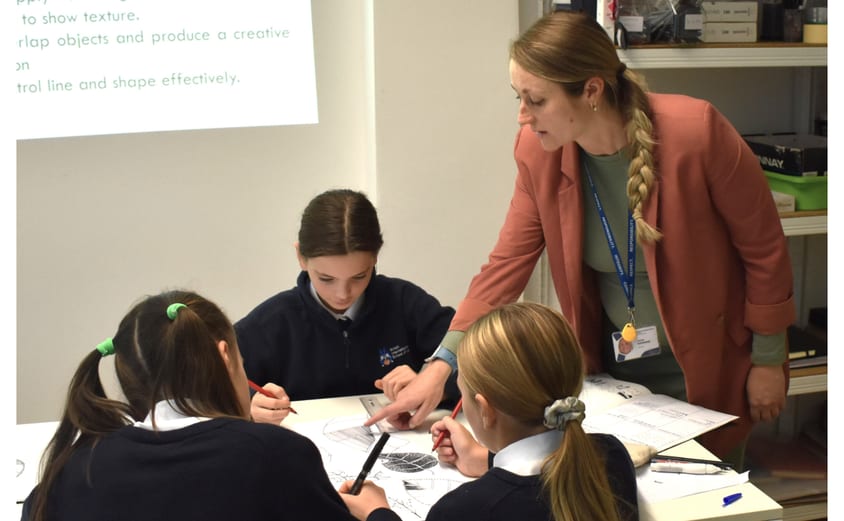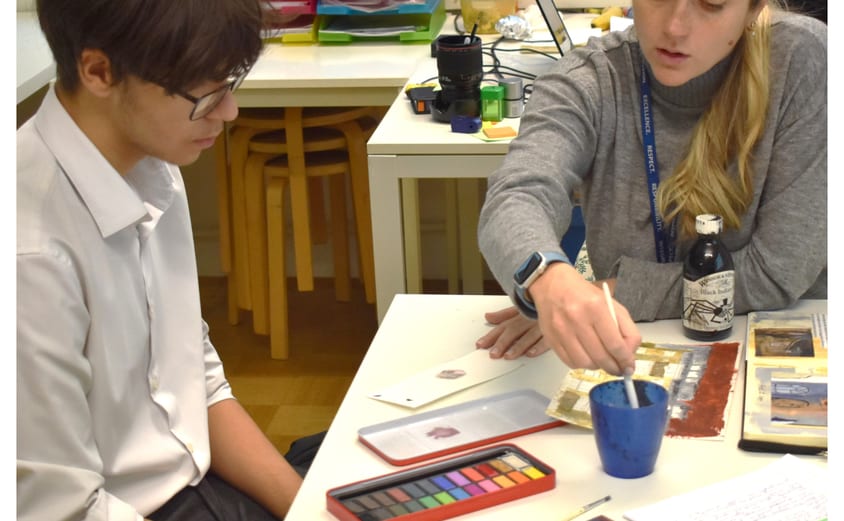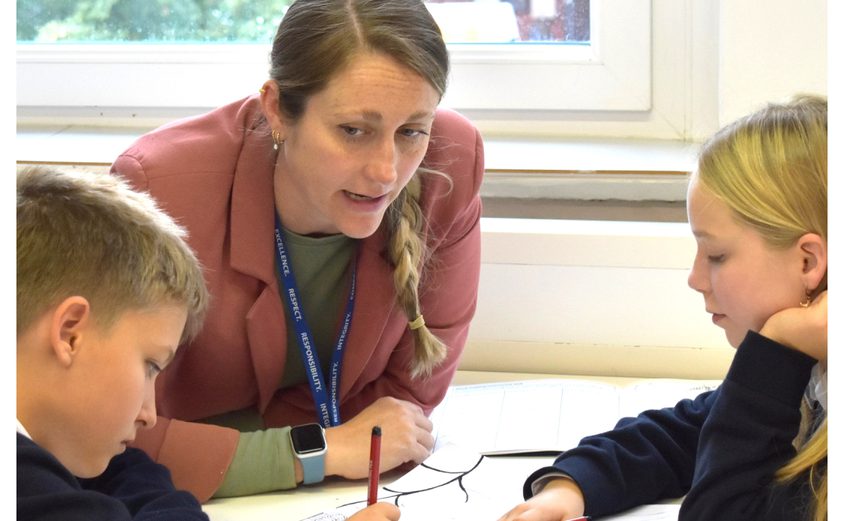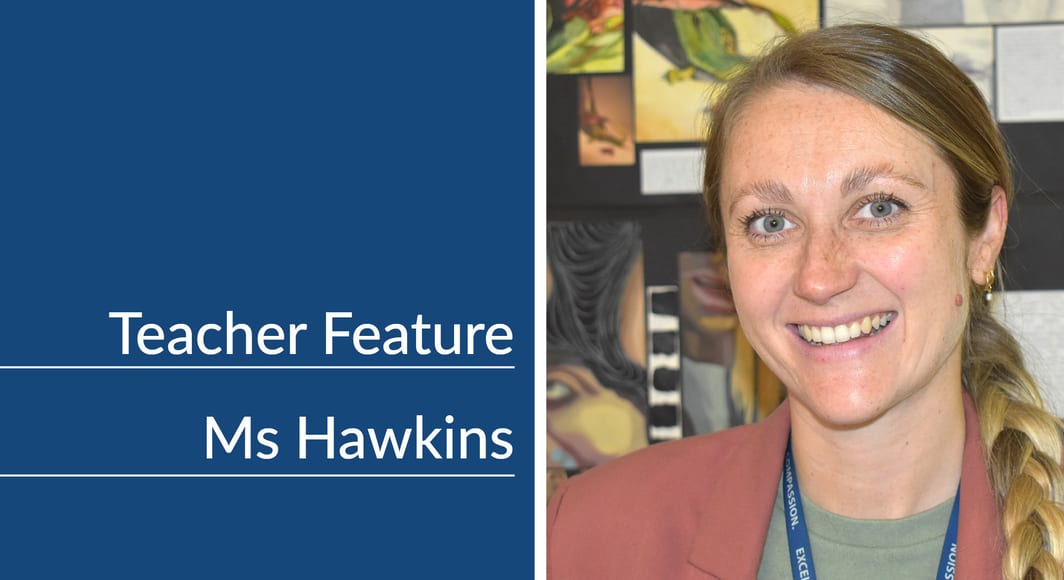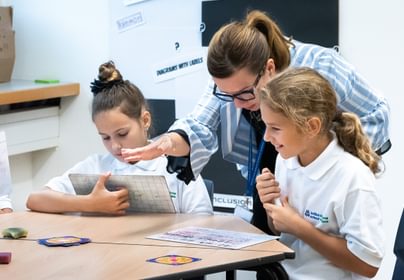Briefly describe your journey as a teacher.
After studying art at school, I completed an art and design foundation at university in which I studied and explored a wide variety of mediums. Following my degree, but before completing my teacher training course, I wanted to experience life in a different country. At the age of 22 I completed a TEFL (teaching English as a foreign language) course and moved to Valladolid in the North of Spain. For a year I worked in a primary school teaching conversational classes before moving to Barcelona in my second year to teach secondary. Whilst there, I also voluntarily taught art classes in English, which only confirmed my career choice. I then completed my secondary art & design PGCE in Cheltenham, before teaching in the UK for 3 years. Having taught abroad previously, I knew the time would come when I would move, which is when I continued my teaching career in Romania, Bucharest. Here, I was also the Head of Art. After several years in Romania I started my adventure in Slovenia, and here I am!
Why did you decide to specialize in Art?
It was my secondary art teacher who inspired me the most. He was a great teacher, who allowed me to express myself through art and design. His classes were engaging, creative and inspiring, and they were the lessons I looked forward to the most. Teaching art and design at secondary level is really rewarding as it fosters creativity, critical thinking, self-expression, and a range of skills that are applicable in preparing student for life outside of school. Teaching art at exam level allows for deeper knowledge of artistic practices and making connections to the world around them. It enhances students’ cultural awareness, communication skills, and an appreciation for the arts, providing students with a well-rounded education. I am motivated by how expressive art can be, it’s without restrictions and enables us to experiment, create and look at disciplines from all perspectives. I truly believe that it is a subject that offers something to all, regardless of their academic background. It inspires ideas, encourages creative thinking, and offers an insight into an ever-growing, exciting industry.
What makes BISL such a unique place to work?
Working with such small classes is what makes BISL unique. I’m able to provide 1-1 support and demonstrations as well as focusing more on the class content instead of managing many students at once. This ultimately results in better outcomes and students making quicker progress. Small class sizes are especially beneficial at exam level, where time can be spent tracking students’ progress or using progress checkers for 1-1 meetings with students. This enables them to be aware at all times of their next steps and how to achieve them. I also love that we are a small community, everyone here is a familiar face, even those you don’t teach!
How would you describe a typical day at BISL?
A typical day at BISL starts with a flask of British tea before preparing materials and resources for the lessons ahead. As the only art teacher for secondary it’s important everything is organised in advance to maximise teaching time. Firstly, I welcome my students at the door before getting to work. Each day varies depending on the classes, which could range from essay writing and analysis techniques at A-level to practical group pieces in year 7, each day and lesson is different. During breaks I usually have a few students from exam groups pop into complete work or ask for guidance, before getting back to teaching. When not teaching, I can be found in my classroom, creating resources for lessons, marking, or planning new and exciting projects to get students engaged.
What is the best part of your day at BISL?
For me it’s teaching! Especially when introducing students to new concepts, artists, or materials. Structuring and scaffolding their learning and watching them progress is the most rewarding part.
Why is the experience of an international education important for a student?
Experiencing an international education allows students to interact with people from diverse cultural backgrounds. This exposure helps them develop a greater appreciation for cultural differences as well as a broader worldview. For students who have relocated here, it also forces them to adapt to new challenges and environments, which fosters personal growth, independence, and resilience. Students are given a British education at BISL and leave with qualifications that enable them to study all over the world, opening them up to endless possibilities when they eventually fly the nest.
